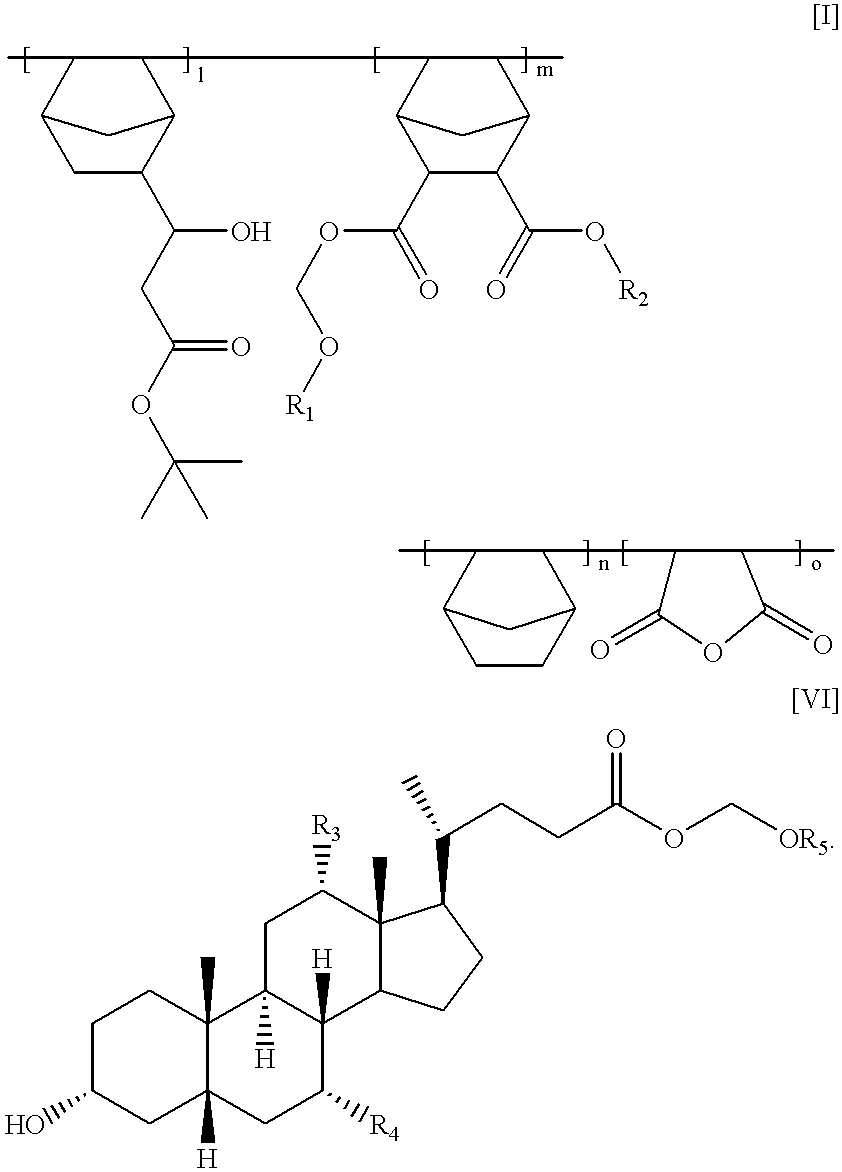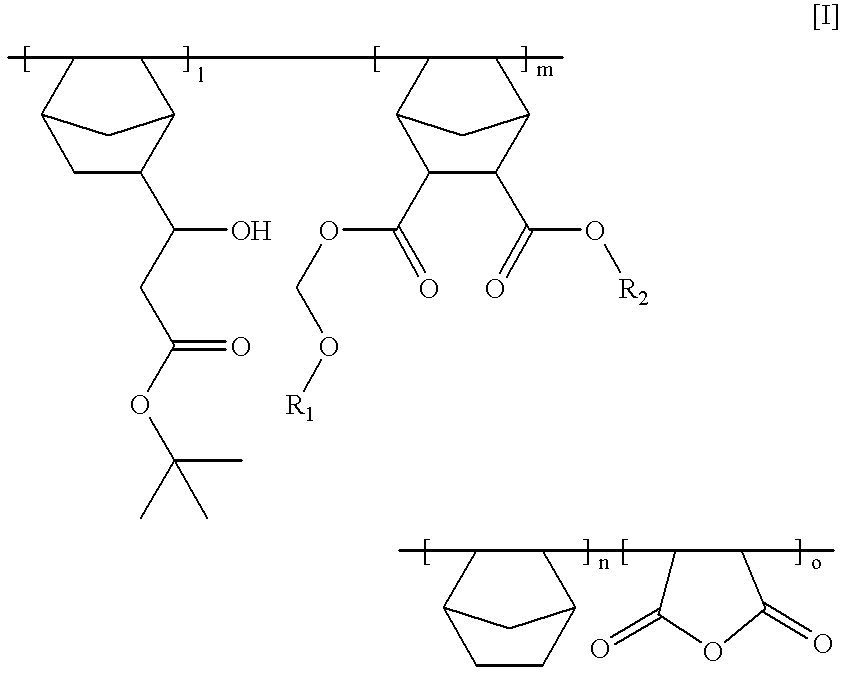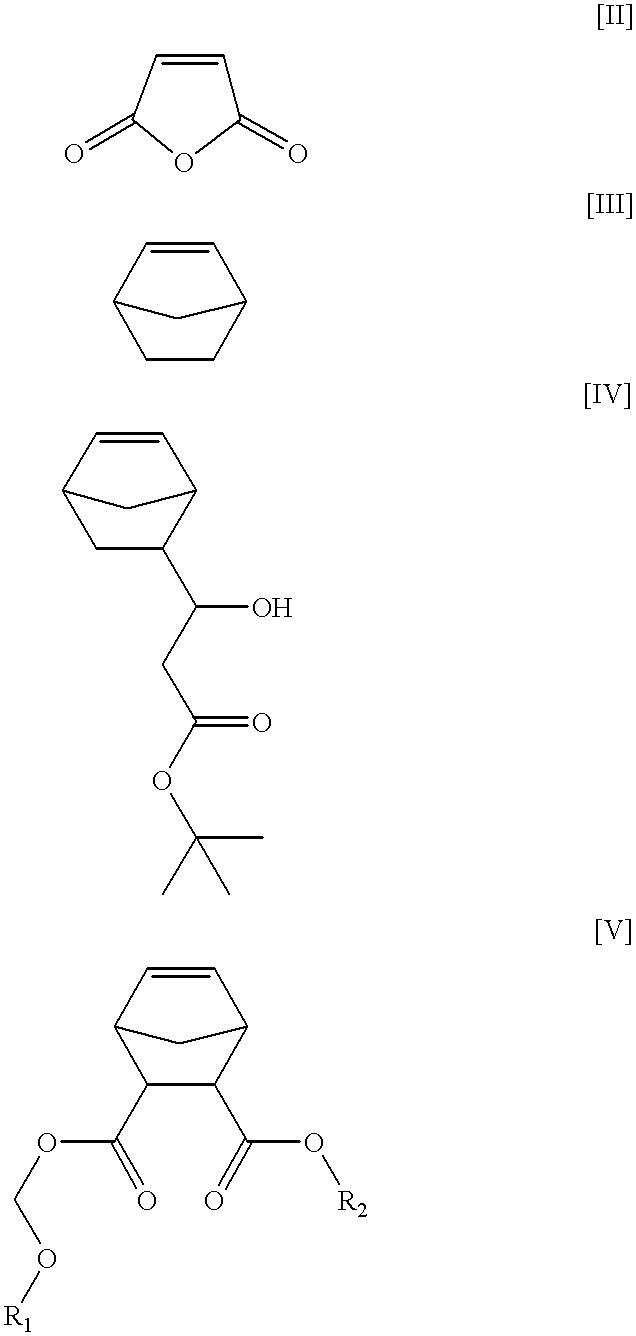Chemically amplified positive photoresist composition
a technology of photoresist composition and amplification, applied in the field of chemical amplification positive photoresist composition, can solve the problems of unsuitable utilization, low absorbance of polyacrylate derivatives, and virtually impossible realization of micro patterns as small as quarter microns (0.25 microns)
- Summary
- Abstract
- Description
- Claims
- Application Information
AI Technical Summary
Benefits of technology
Problems solved by technology
Method used
Image
Examples
synthesis example 2
The same procedure as in Synthesis Example 1 was repeated, except for using, instead of 30.1 g of lithocholic acid, 31.4 g of deoxycholic acid, to obtain 30.4 g of the low molecular weight compound represented by the following structural formula II. ##STR6##
synthesis example 3
The same procedure as in Synthesis Example 1 was repeated, except for using, instead of 30.1 g of lithocholic acid, 32.7 g of deoxycholic acid, to obtain 28.2 g of the low molecular weight compound represented by the following structural formula III. ##STR7##
synthesis example 4
The same procedure as in Synthesis Example 1 was repeated, except for using, instead of 7.7 g of chloromethyl methyl, 12.7 g of 2-(chloromethoxymethyl)bicyclo[2,2,1]heptane, to obtain 29.1 g of the low molecular weight compound represented by the following structural formula IV. ##STR8##
PUM
| Property | Measurement | Unit |
|---|---|---|
| molecular weight distribution | aaaaa | aaaaa |
| molecular weight distribution | aaaaa | aaaaa |
| size | aaaaa | aaaaa |
Abstract
Description
Claims
Application Information
 Login to View More
Login to View More - R&D
- Intellectual Property
- Life Sciences
- Materials
- Tech Scout
- Unparalleled Data Quality
- Higher Quality Content
- 60% Fewer Hallucinations
Browse by: Latest US Patents, China's latest patents, Technical Efficacy Thesaurus, Application Domain, Technology Topic, Popular Technical Reports.
© 2025 PatSnap. All rights reserved.Legal|Privacy policy|Modern Slavery Act Transparency Statement|Sitemap|About US| Contact US: help@patsnap.com



